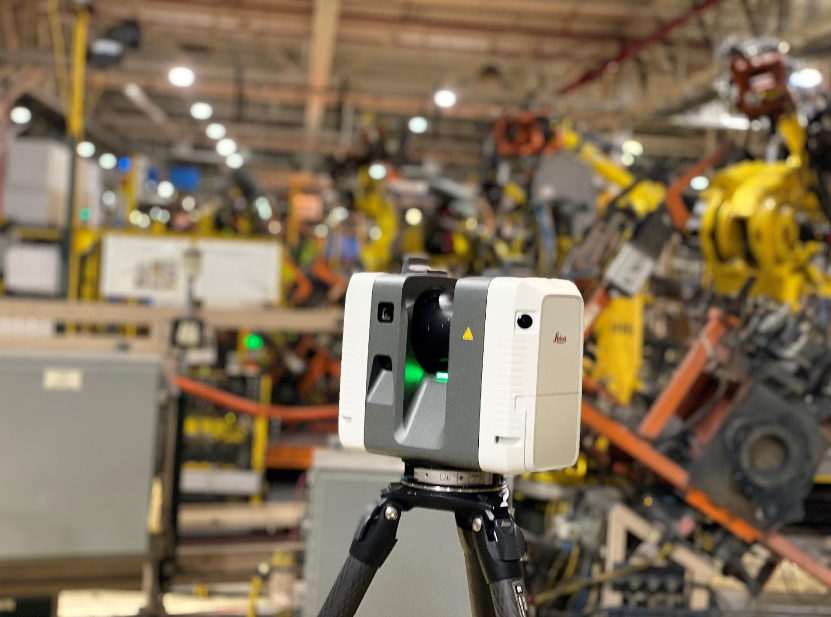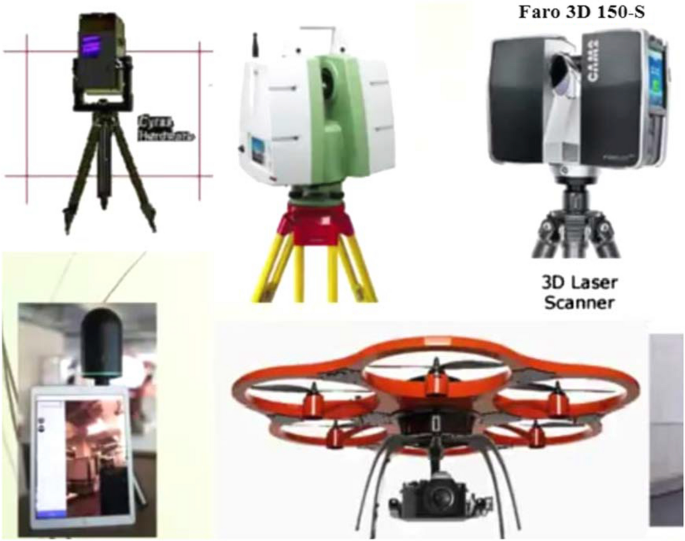Expert Insights on the Future of 3D Scanning
Just How 3D Laser Scanning Changes Architectural Design and Construction Projects
3D laser scanning is transforming the landscape of architectural layout and construction. This modern technology uses unparalleled precision in recording existing atmospheres, which helps with much better task preparation and implementation. It minimizes mistakes while improving effectiveness in numerous stages of growth. The effects for cooperation among designers, engineers, and various other stakeholders are considerable. These improvements open the door to new style opportunities and ingenious solutions. What lies ahead for this evolving innovation?
The Principles of 3D Laser Scanning Innovation
3D laser scanning innovation may appear complex, its core principles are transformative and straightforward for architectural style. This technology uses laser beams to catch specific measurements of physical structures, creating a comprehensive factor cloud that represents the scanned atmosphere. A laser scanner emits fast pulses of light, measuring the moment it takes for the light to return, which permits for the calculation of distances with exceptional accuracy.
The resulting point cloud can be exchanged a 3D version, giving architects with indispensable aesthetic data. This version enables professionals to examine and adjust design aspects within their tasks, enabling ingenious remedies and enhanced visualization. By utilizing 3D laser scanning, designers can better understand the existing problems of a site, ensuring that brand-new layouts harmonize with their surroundings. This integration of modern technology into architectural style notes a considerable development, promoting imagination and precision in the field.

Enhancing Accuracy and Performance in Architectural Projects
As building projects increasingly demand precision and speed, 3D laser scanning arises as a pivotal tool in enhancing both precision and performance. This innovation records millions of data factors in a quick duration, creating precise and in-depth 3D versions of existing frameworks. The capacity to obtain precise dimensions decreases the danger of mistakes during the style stage, allowing engineers to visualize their tasks with unmatched clearness.
The quick information collection procedure reduces the time invested on-site, making it possible for groups to focus on evaluation and design renovations. With real-time data availability, modifications can be made swiftly, promoting a much more streamlined process. The combination of 3D laser scanning into architectural practices not just boosts measurement precision however additionally improves the general project timeline, promoting quicker decision-making. In a sector where accuracy is important, this modern technology stands as a transformative force, raising the requirements of architectural style and building and construction projects.
Simplifying Collaboration Among Stakeholders
While standard architectural procedures frequently include fragmented interaction among stakeholders, 3D laser scanning cultivates a much more cohesive joint environment. By supplying precise, high-resolution information, this technology allows engineers, designers, professionals, and clients to run from a unified factor of recommendation. The comprehensive visualizations produced via laser scanning eliminate uncertainties and misinterpretations, ensuring that all events have access to the same info.
This transparency boosts decision-making and urges prompt comments, as stakeholders can easily visualize layout aspects and spatial partnerships. In enhancement, the integration of 3D scanning data right into Building Information Modeling (BIM) systems better streamlines partnership, enabling real-time updates and adjustments. Such seamless interaction not only reduces conflicts but also accelerates task timelines, as all stakeholders stay aligned throughout the design and building and construction stages. Ultimately, 3D laser scanning changes conventional workflows into an extra collective and efficient procedure, benefiting all events involved.
Unlocking Imaginative Opportunities in Layout
By allowing engineers to envision intricate detailed details and spatial partnerships, 3D laser scanning discloses innovative possibilities in style. This innovation enables exact mapping of existing environments, making it possible for engineers to check out cutting-edge principles that may have previously appeared impractical. With extremely precise data, developers can experiment with unusual types and products, pushing the limits of typical design.
The assimilation of 3D laser scanning into the style process promotes collaboration among multidisciplinary teams, motivating the exchange of concepts and improving imagination. The in-depth visualizations generated by this modern technology not only aid in recognizing prospective layout obstacles yet also influence solutions that may not have actually been taken into consideration. Therefore, engineers can produce extra dynamic and appealing areas that resonate with individuals while satisfying functional needs. Inevitably, 3D laser scanning changes the architectural landscape, empowering developers to realize their visions with unmatched accuracy and imagination.
The Future of 3D Laser Scanning in Architecture and Construction
The assimilation of 3D see this page laser scanning right into building design not just boosts creative thinking but likewise establishes the stage for its evolving role in the future of architecture and construction. As technology advancements, the precision and effectiveness of laser scanning will continue to boost, allowing home builders and architects to create more intricate designs with accuracy - 3D Scanning. Making use of this technology in real-time data collection will assist in much better decision-making, reducing mistakes and streamlining process
Future applications might include enhanced and online fact combinations, enabling stakeholders to picture jobs in immersive environments. Furthermore, as sustainability comes to be a top priority, 3D laser scanning will certainly sustain the growth of energy-efficient styles by offering detailed insights into existing frameworks. As partnership among various techniques becomes more necessary, the capability to share exact 3D models will cultivate development and enhance task outcomes. Ultimately, 3D laser scanning will certainly redefine standards in architectural style and building and construction methods.
Regularly Asked Inquiries
What Is the Expense of Executing 3D Laser Scanning Innovation?

Just how Long Does a Typical 3D Laser Scanning Project Take?
A typical 3D laser scanning project can take anywhere from a couple of hours to several days, depending upon aspects such as the task's dimension, intricacy, and the level of detail required for precise data capture.
What Kinds Of Projects Advantage Most From 3D Laser Scanning?
3D laser scanning benefits various projects, particularly large buildings, historical remediations, and intricate remodellings. It boosts precision in measurements, lowers mistakes, and gives thorough information crucial for reliable planning and execution in architectural layout and building and construction.

Exist Particular Software Program Programs Required for 3D Laser Scans?
Yes, particular software application are necessary for refining 3D laser scans. 3D Scanning. Popular choices consist of Autodesk Wrap-up, Faro Scene, and Leica Cyclone, each offering special features a fantastic read tailored for visualizing and analyzing checked information efficiently in numerous jobs
How Does 3D Laser Scanning Effect Environmental Sustainability in Building And Construction?
3D laser scanning enhances environmental sustainability in construction by minimizing product waste, enabling specific measurements, and advertising reliable source usage. This innovation enables for much better preparation, minimizing the environmental impact of construction projects via boosted accuracy and effectiveness.
3D laser scanning is changing the landscape of architectural style and building. 3D laser scanning modern technology might seem complex, its core concepts are uncomplicated and transformative for building style. By allowing engineers to picture complicated complex information and spatial partnerships, 3D laser scanning reveals creative opportunities in style. The integration of 3D laser scanning into the style process promotes collaboration among multidisciplinary teams, motivating the exchange of concepts and boosting more tips here imagination. The integration of 3D laser scanning right into building style not only enhances imagination however likewise establishes the stage for its progressing duty in the future of design and building and construction.